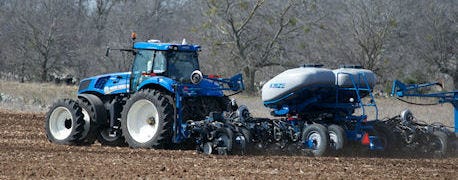
"Our critics are convinced that technology applied to personal communications devices and medicine is a net good, but science applied to growing things is freakish, unnatural and dangerous."
Blake Hurst, Missouri Farmer and President of the Missouri Farm Bureau, writes this in his Midwest Voices opinion article that appeared on the Kansas City Star website last month. Give it a read.
Technology is constantly criticized yet demanded by people. Just as Hurst states, it is accepted in all areas except one of the most vital for survival – feeding the human race.

Multi-Hybrid Planting: The opportunity to witness technology being tested in the field was an incredible experience. The potential advantages to this technology are endless.
Technology in agriculture is ever-changing, sometimes it moves faster than imaginable. But farming is one of the most conservative industries out there.
The use of technology is essential to agriculture today. The American Farmer produces 262% more food with 2% fewer inputs compared with 1950, according to the American Farm Bureau. That is thanks to technology. As the population of the world continues to increase, technology to help feed them will be required.
"We adopt change very, very slowly, and don't invest in new technologies without plenty of proof that they make sense," writes Hurst. "Our commitment to the place where we live is strengthened by the presumed tenure of our residence."
Related: Ag Tech May Create Consumer Confusion
The acceptance of technology for every farm is different. This is what makes our industry work. There are those willing to be on the cutting or bleeding edge, adapt easily and willing to try things as they become available.
The bleeding edge is not a comfortable place for some, but imagine what being on the 'bleeding edge' of John Deere's steel plow was like.
There is no doubt technology needs to be field tested, but it is necessary to continue to do our job of feeding the world. The question remains: whose job is it to ensure the consumer it is safe?
About the Author(s)
You May Also Like




